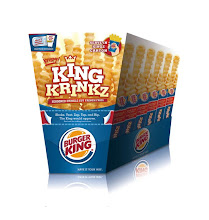
Supermarket News reports that Fresh & Easy will attempt to correct their retailing missteps with a line of healthier prepared foods.
Launched under the EatWell umbrella, it's a line of 17 ready-to-eat prepared meals and sides, including salads, soups, noodles, and various entrees. The price range is pegged to $3.99. All of the items are supposed to contain fewer than 500 calories, and less than 25% of the U.S.D.A. recommended daily allowance for fat and sodium (based on a 2,000 calorie diet). Such numbers have proven elusive for consumers with regular testing of supermarket products showing a wide variation in actual calories, fat, sodium and other markers.
Fresh & Easy has struggled since opening its smaller footprint stores in the CA, AZ and Nevada markets. Initially the company had too few SKUs and the wrong product mix, as if they had never really studied the American consumer (Fresh & Easy is owned by UK giant Tesco). Then the lousy economy hit those areas especially hard.
But given the goal of making Fresh & Easy a rival for convenience stores (who are pushing for more foods, including healthy options), this new line holds out some hope of turning the chain's fortunes around. The only question is: will 7-Eleven sit still long enough for Fresh & Easy to figure this all out?
This blog includes excerpts from a weekly round-up of food industry & food licensing news provided free to Broad Street Licensing Group's clients, and as a paid subscription service (6 months $695; 1 year $1,125).
Too busy to keep up with the news wires & publications about the food business? If you or your company would like to subscribe to our news service, call Danielle Foley at Broad Street Licensing Group (tel. 973-655-0598) and ask for your free sample or click on our website.
.gif)

























